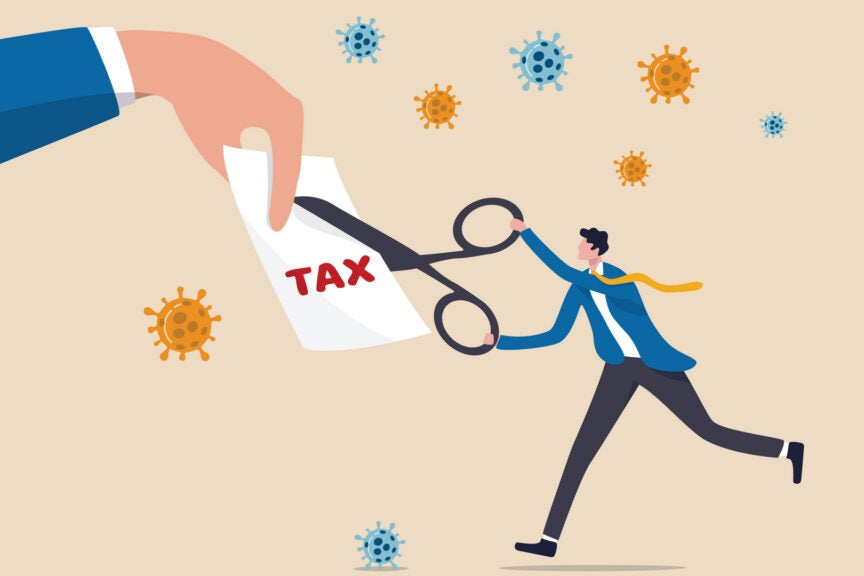Expert Predicts Future Tax Cuts With ‘More Deficit Expansion,’ With No Tariff Revenue To Fund Deficits Amid Electronics Tariff Pause – Invesco QQQ Trust, Series 1 (NASDAQ:QQQ), SPDR S&P 500 (ARCA:SPY)

Economist Craig Shapiro has expressed skepticism regarding President Donald Trump’s trade policies, expressing concerns about tariff revenue not being able to fund the trade deficit, which is likely to widen after his proposed tax cuts. This is particularly following the exemption of smartphones, chips, and computers from reciprocal tariffs on Friday.
What Happened: In a post on X, Shapiro stated, “Well. I was wrong about Trump again. He did cave. Exempting smartphones and computers from the reciprocal tariffs.”
Shapiro anticipated a shortfall in tariff revenue, which was seemingly intended to offset government deficits. “And now it seems like there won’t really be tariff revenues to help fund the deficits either,” he wrote.
This lack of tariff revenue, combined with potential future tax cuts, raises concerns about increasing the national debt. “Eventually we will get the tax cuts but unfortunately they will come with more deficit expansion and higher inflation and higher yields,” he added.
Smartphones, computers, and semiconductors were temporarily exempted from new U.S. reciprocal tariffs on Friday, despite a 20% tariff remaining on all Chinese goods, reversing part of a recently imposed 145% tariff.
However, the Commerce Secretary Howard Lutnick indicated these electronics exemptions are temporary and further tariffs could follow soon.
See Also: Mark Cuban Examines Trump’s Tariff Exemptions Rationale On Electronics: ‘That’s Billions Of Revenue For The USA’
Why It Matters: Additionally, Shapiro highlighted the contradiction with the administration’s previous assertions that exporting countries bear the burden of tariffs.
The macro strategist at the Bear Traps Report was critical of the implementation of the tariff plan, suggesting it lacked resolve. “The execution of his tariff plan so far has been kinda horrible, caving to the stock and bond markets only shows the rest of the world that your pain tolerance is lower than theirs,” Shapiro asserted.
This, according to Shapiro, signals a weakness in the U.S. negotiating position and undermines the potential for significant trade agreements. “There won’t be any tremendous trade deals,” he predicted.
His final remark, “Promises made. Promises kept ?” suggests a questioning of the administration’s ability to deliver on its economic pledges without adverse effects.
Price Action: After a recovery on Friday, the Nasdaq 100 index was 15.9% lower than its previous high of 22,222.61 points. The S&P 500 index was down 12.75% from its record of 6,147.43 points, and the Dow Jones declined 10.78% from its 52-week high of 45,073.63 points.
On Friday, the futures on the S&P 500 index rose by 1.18%, whereas the futures of Dow Jones and the Nasdaq 100 index were up 0.72% and 1.61%, respectively.
The SPDR S&P 500 ETF Trust SPY and Invesco QQQ Trust ETF QQQ, which track the S&P 500 index and Nasdaq 100 index, respectively, ended higher on Friday. The SPY was up 1.78% to $533.94, while the QQQ advanced 1.84% to $454.40, according to Benzinga Pro data.
Read Next:
Photo courtesy: Shutterstock
Market News and Data brought to you by Benzinga APIs
© 2025 Benzinga.com. Benzinga does not provide investment advice. All rights reserved.



